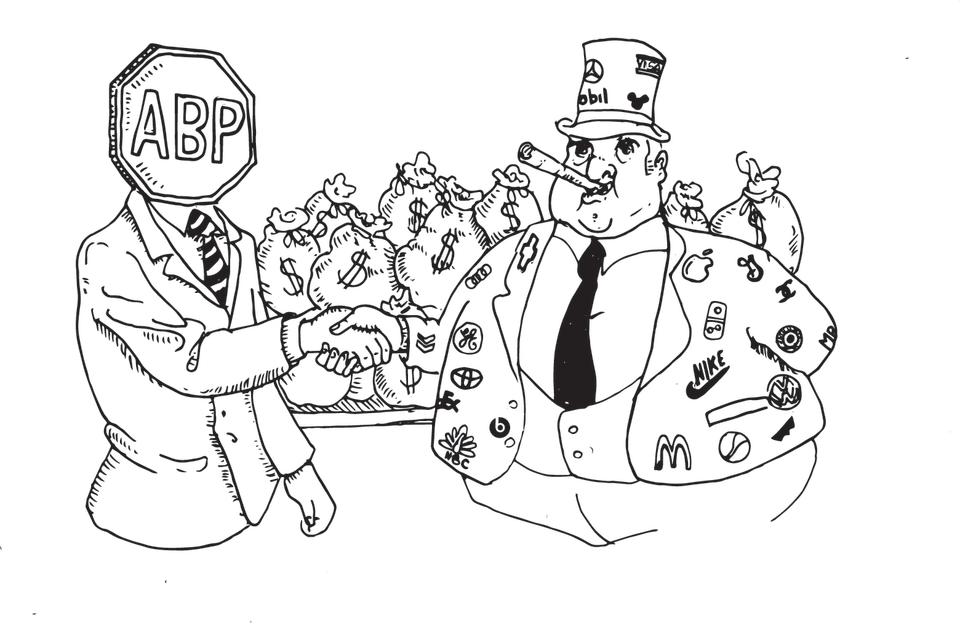RIP: Adblock Plus
Your shady whitelisting ways mean you're dead to me.

I got a little too excited when the Interactive Advertising Bureau (IAB) chief called Adblock Plus (ABP) "an unethical, immoral, mendacious coven of techie wannabes." I immediately wanted to know when the next coven meeting was and how many stars to sew onto my witch cape.
The chief's accusations of heresy came after ABP was disinvited from the bureau's Leadership Summit. IAB's chief further twisted the ceremonial dagger by saying they weren't invited "in the first place."
After that splendid outburst of public bitchiness, finding and joining the ad-blocking coven was my destiny. But little did I know that any ad-free witchery Adblock Plus might've been storing up for future spell-casting was getting less ad-free by the minute.
Disappointingly, Adblock Plus didn't respond to IAB's dramatic snub by holding a recruitment open house for its mendacious coven.
Instead Adblock Plus held a summit earlier this week in London to hash out a new treaty with ad publishers, so even more of them can be white-listed to bypass the popular tool's advertising filters.
The superstar ad-blocking tool has already taken a lot of heat for having that white list in the first place -- called an "acceptable ads" policy -- as well as the way it's executed.
Not all of its 144 million or so users know this, but Adblock Plus comes preloaded with a filter that allows some ads to be shown. That white list is turned on by default when someone installs Adblock Plus, so users must manually opt out if they don't want to see any ads. Those ads that don't get blocked come from companies and organizations that Adblock Plus calls "strategic partners." They are all manually approved by ABP and must meet ABP's acceptable ads criteria.
Large companies pay Adblock Plus' parent company, Eyeo, for this white-listing, though it's offered free for small and medium-size websites. Even after it started rolling out in 2011, Eyeo would not name its white-listed "strategic partners." But when information was leaked, the ad blocker confirmed to Financial Times that it was giving a pass to more than 300 businesses. It was reported that "one digital media company (which asked not to be named) was told that it would cost 30 percent of its advertising revenue to be whitelisted by Eyeo and Adblock Plus."
Its pay-for-play deals with Google, Microsoft, Amazon and multi-billion dollar "native content" ad company Taboola were also confirmed.
Do you recognize that last one? If not, you surely know Taboola's trademark "Around The Web" paid-content links -- as in, those clickbait redirect articles sometimes called "You May Also Like," confusingly displayed alongside actual articles on news sites. Right now on The Atlantic you can see Taboola's "25 Stars Who Are Literally Unrecognizable Without Makeup," and on Daily Mail, "Get Paid $150 For Using This Credit Card."
This is the same Taboola that was smacked down by the Better Business Bureau not too long ago for blurring the line between so-called "native advertising" and real editorial content. Taboola's unsuccessful argument against the agency's charges was that it isn't an advertiser and therefore isn't subject to the Better Business Bureau's National Advertising Division rules.
Maybe a scornful rival coven cursed Adblock Plus to have bad taste in strategic partners. But bad taste can't hurt you, right? In our brave new world of skyrocketing malvertising infections, it can.
While Adblock Plus appears to be careful about documenting the screening of its white list, the security of ads served through ABP's white list is the elephant in the room. That's because ads that get a pass on ABP's white list are only going to be as secure as the sources serving them to viewers. For an example, look no further than the June 2014 Syrian Electronic Army hack on Reuters -- which was done through compromising Taboola's ad slots.
Adblock Plus says its white list program is designed to make the internet better through encouraging unintrusive ads ... though I think it's important to note that the "Acceptable Ads" anchor tag (its midpage URL) is #monetization. The program is framed as a practical compromise between the conflicts of ads and ad blocking. On top of all of this philosophy, ABP claims its white list is something its users want (citing this survey, which doesn't actually say that).
Some advertisers resent the program almost as much as they hate the fact that ad blockers even exist. In recent lawsuits against the company, some ad publishers have called ABP's white list program "extortion," "racketeering" and a "shakedown."
I'm guessing those advertisers are the ones who've been left off the white list -- for now, anyway.

